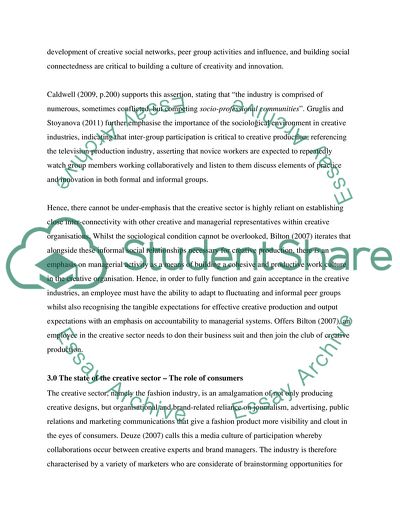Cite this document
(Employment in Fashion Marketing within the Creative Industries Essay Example | Topics and Well Written Essays - 2500 words, n.d.)
Employment in Fashion Marketing within the Creative Industries Essay Example | Topics and Well Written Essays - 2500 words. https://studentshare.org/human-resources/1818265-research-report-on-employment-full-time-portfolio-working-or-freelancing-in-a-specific-sector-of-the-creative-industries
Employment in Fashion Marketing within the Creative Industries Essay Example | Topics and Well Written Essays - 2500 words. https://studentshare.org/human-resources/1818265-research-report-on-employment-full-time-portfolio-working-or-freelancing-in-a-specific-sector-of-the-creative-industries
(Employment in Fashion Marketing Within the Creative Industries Essay Example | Topics and Well Written Essays - 2500 Words)
Employment in Fashion Marketing Within the Creative Industries Essay Example | Topics and Well Written Essays - 2500 Words. https://studentshare.org/human-resources/1818265-research-report-on-employment-full-time-portfolio-working-or-freelancing-in-a-specific-sector-of-the-creative-industries.
Employment in Fashion Marketing Within the Creative Industries Essay Example | Topics and Well Written Essays - 2500 Words. https://studentshare.org/human-resources/1818265-research-report-on-employment-full-time-portfolio-working-or-freelancing-in-a-specific-sector-of-the-creative-industries.
“Employment in Fashion Marketing Within the Creative Industries Essay Example | Topics and Well Written Essays - 2500 Words”. https://studentshare.org/human-resources/1818265-research-report-on-employment-full-time-portfolio-working-or-freelancing-in-a-specific-sector-of-the-creative-industries.


